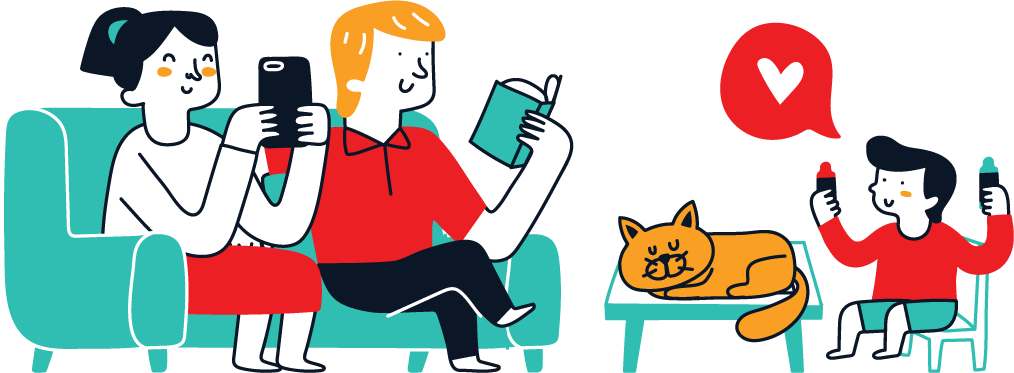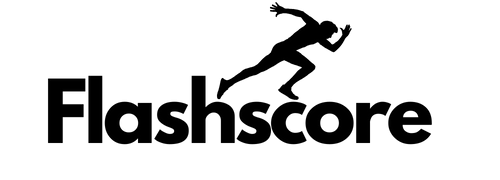In today’s fast-paced digital world, the need for creativity is more essential than ever. If you’re looking to elevate your project with striking visuals and innovative designs, hiring a freelance designer can be the perfect solution. A talented freelance designer brings unique insights and skills, offering tailored design services that align with your specific vision. By forging a partnership with the right designer, you unlock creative potential that transforms ideas into impactful designs. Let’s embark on a journey to find a freelance designer who can deliver exceptional creative solutions for your next venture!
Understanding the Role of a Freelance Designer
The landscape of design work has evolved, making the freelance designer roles more relevant than ever. Freelance designers often engage in graphic design, branding, and web design, showcasing a wide array of skills. These professionals operate independently, taking on projects that align with their expertise and creative vision.
One crucial aspect is the responsibilities of a freelance designer. They are accountable for understanding client needs, developing design concepts, and delivering high-quality work within set deadlines. This autonomy allows them to adapt to various project requirements, enhancing their versatility in different design fields.

Benefits of Hiring a Freelance Designer
Hiring a freelance designer comes with numerous advantages that can greatly enhance your projects. One of the key freelance designer benefits is flexibility. Freelancers often have the ability to adapt their schedules to fit your timeline, making it easier to meet deadlines without compromising quality.
Another advantage of freelance designers lies in their diverse skill sets. Many have experience across various industries, allowing them to bring unique insights and innovative solutions to your design needs. This fresh perspective can lead to creative outcomes that might not arise from an in-house team.
Cost-effectiveness is also a major reason to consider freelancers. Companies can reduce overhead costs associated with full-time employees, such as benefits and office space. Freelance designers often work on a project basis, providing you with control over your budget. This combination of personalized service and specialized focus on your project makes the advantages of freelance designers particularly appealing.
How to Identify Your Project Needs
Understanding the essentials of your project needs assessment lays the foundation for a successful collaboration with a freelance designer. By clearly defining your design goals, you shape the project vision and establish a direction for your designer to follow. Additionally, determining a budget for your design project is critical in ensuring you can meet financial commitments while achieving significant results.
Defining Your Design Goals
Start by outlining what you aim to achieve with your design project. Identifying your design goals helps streamline the creative process and enables you to convey your vision effectively. Consider factors like your target audience, the message you wish to communicate, and the overall aesthetic you envision. A well-defined set of design goals not only motivates you but also guides the designer in delivering a final product that aligns with your expectations.
Establishing Your Budget
Next, focus on determining your budget for the design project. A clear budget allows you to assess your financial capacity and sets the limitations for hiring talent. Take into account all potential costs, including design fees, revisions, and any additional expenses that may arise. By establishing this financial framework early on, you avoid misunderstandings later in the project and ensure that your designer remains within the agreed-upon parameters.
Where to Find Experienced Freelance Designers
In today’s digital landscape, discovering skilled freelance designers is more accessible than ever. Numerous platforms cater to various needs, allowing businesses to find freelance designers that match their specific project requirements. Exploring both job boards and social media channels can lead to fruitful connections with talented professionals.
Online Job Boards and Platforms
Freelance job boards serve as a hub for clients seeking design expertise. Platforms such as Upwork, Freelancer, Behance, and Dribbble offer extensive databases of designers showcasing their skills and portfolios. Users can filter by specialties, allowing for targeted searches when hiring designers online. These platforms simplify the process, enabling clients to review previous work and ratings, which helps in making informed decisions.
Social Media Channels
Social media has emerged as a powerful tool for finding freelance designers. LinkedIn, in particular, offers networking opportunities that connect businesses with design professionals tailored to specific needs. By conducting searches or joining design-related groups, clients can stumble upon hidden gems. Platforms like Instagram and Pinterest also feature creative portfolios, guiding clients to discover and connect with potential hires.
What to Look for in a Freelance Designer
When choosing the right designer, understanding the essential qualities of freelance designers can significantly influence your project’s success. Creativity stands out as a key attribute. A designer who can think outside the box and develop unique solutions will elevate your project. Strong communication skills are another critical factor; an effective designer should articulate ideas clearly and understand your feedback throughout the design process.
Reliability and professionalism are equally important. A dependable designer respects deadlines and provides timely updates, ensuring a smooth workflow. Finally, a robust portfolio showcasing a range of styles and past projects offers insight into their capabilities. Assessing these qualities will assist you in choosing a designer whose skills align with your vision and goals.
Evaluating a Freelance Designer’s Portfolio
When selecting the right freelance designer, a thorough designer portfolio evaluation becomes essential. A freelancer’s portfolio offers crucial insights into their skills, creativity, and suitability for your project. Understanding the key elements within a strong portfolio can help you make an informed choice.
Key Elements of a Strong Portfolio
A quality freelance portfolio should exhibit a variety of work types, showcasing the designer’s unique style while adhering to high standards. Look for projects that demonstrate strong portfolio elements such as creativity, technical proficiency, and attention to detail. This diversity indicates a designer’s versatility and capability to tackle different design challenges.
Recognizing Versatility in Design Styles
Versatility in a designer’s body of work is a crucial aspect of their freelance portfolio. A well-rounded portfolio should reflect various design styles and approaches. This adaptability not only showcases the designer’s skills but also provides assurance that they can align with your specific project needs and vision. Analyze their previous works to determine if they exhibit the ability to pivot between different aesthetics while maintaining consistency in quality.
Interviewing Potential Freelance Designers
When interviewing freelance designers, asking the right questions can make a significant difference in finding the perfect fit for your project. Engaging in a conversation helps you discover their creative process and how well they align with your vision. It is important to explore not just their technical skills but also their approach to problem-solving and collaboration.
Essential Questions to Ask
Start by inquiring about their design process. Questions for designers might include: “Can you describe your usual workflow and how you manage tight deadlines?” Understanding their methodology provides insight into how they handle challenges.
Past experiences can shed light on a designer’s capabilities. Ask them to share projects that highlight their strengths. Questions for designers such as, “What challenges have you faced in past projects and how did you overcome them?” will reveal their adaptability and problem-solving skills.
Lastly, clarify their understanding of your project goals. Questions for designers related to your specific needs, like “How do you ensure your designs align with our brand message?” can help ensure they grasp your expectations thoroughly. Engaging in this dialogue lays the groundwork for a fruitful working relationship.
Understanding Pricing Models
Freelance designer pricing can vary significantly based on several factors, including the scope of work and designer experience. Understanding design project costs is essential for any client looking to hire a freelancer. Commonly used pricing models include hourly rates, fixed project fees, and retainer agreements, each offering distinct advantages and potential drawbacks.
Hourly rates provide flexibility for clients with changing project needs. They allow for billing based on the actual time spent on tasks. In contrast, fixed project fees offer clarity on costs from the start, reducing uncertainty. For ongoing needs, retainer agreements can be cost-effective, ensuring that access to design services is secured over an extended period.
Clients should assess which pricing model aligns best with their budget and project goals. Each model brings its own value and can influence the overall design project costs. By discussing potential pricing options upfront with freelancers, clients can foster informed decision-making and a smoother working relationship.
Contracting and Working with a Freelance Designer
Establishing clear contracts is vital when engaging a freelance designer. Having well-defined terms fosters a stronger working relationship and minimizes misunderstandings. Setting up robust freelance contracts ensures both parties understand expectations regarding project scope, timelines, payment terms, and any necessary revisions. A comprehensive working agreement lays the groundwork for successful collaboration, paving the way for a smoother execution of your project.
Creating Clear Agreements
Creating clear agreements is essential in the freelance design world. The freelance designer contracts should outline specific deliverables, including design milestones and deadlines. Define payment structures to mitigate ambiguities—fixed rates or hourly wages can affect overall project costs. Ensure that revision policies are explicitly stated so designers know how many changes are permitted. With such agreements in place, both the client and designer can focus on creativity and collaboration, rather than logistics.
Building a Long-term Relationship with Your Freelancer
Establishing long-term freelancer relationships offers numerous advantages to clients and designers alike. When you choose to work with designers continuously, you ensure a consistent approach to your brand’s identity. This familiarity breeds efficiency, making collaboration smoother and more productive.
To strengthen these partnerships, prioritize open and ongoing communication. Sharing feedback and insights regularly enhances collaboration, allowing both parties to adjust and elevate the project. Additionally, showing appreciation for your freelancer’s work fosters mutual respect, ensuring a positive working environment.
Investing in these relationships not only helps you achieve your design goals but also creates a supportive network. As projects evolve, having a trusted designer who understands your vision can streamline the creative process, making future collaborations more effective and enjoyable.
Staying in Communication During the Design Process
Clear communication serves as the backbone of any successful design project. During the design process, maintaining ongoing dialogue between clients and designers fosters a productive environment. Clients should feel encouraged to share their thoughts and perspectives at every stage. This approach not only streamlines design communication but also helps in aligning the project’s vision with the desired outcomes.
Using Feedback to Enhance Results
Incorporating feedback in design projects is crucial for achieving results that resonate with clients. Constructive criticism allows designers to understand client preferences and make necessary adjustments. Effective communication with designers enables an open exchange of ideas, ensuring that all voices are heard. Regular check-ins and updates can significantly enhance the final product, leading to greater satisfaction and a more successful design experience.
Trends to Watch in Freelance Design
Staying ahead in the freelance design market requires awareness of emerging freelance design trends and shifts in client preferences. One significant change is the increased adoption of technology in design workflows. Tools powered by artificial intelligence are reshaping how designers approach tasks, allowing for improved efficiency and creativity.
Sustainable design practices are becoming essential. Clients are more conscious of environmental impact and are seeking designers who can integrate eco-friendly materials and techniques into their projects. This movement highlights a growing demand for versatility among design professionals as they adapt to changing values in the design industry.
Another key factor is the evolving expectations of clients. As global communication becomes more accessible, clients anticipate faster turnaround times without sacrificing quality. Understanding these design industry trends will empower both freelancers and clients to build successful collaborations. Recognizing the future of design can lead to enhanced outcomes that meet and exceed client satisfaction.
Conclusion
In summary, the journey to finding the right freelance designer involves a clear understanding of your project needs and goals. Through careful evaluation of portfolios, effective interviews, and insightful feedback during the design process, you can build a collaborative relationship that meets your creative vision. Utilizing freelance designer insights can significantly enhance the quality of your project outcome.
As you embark on the path of hiring freelance designers, remember that well-informed decisions lead to successful collaborations. By implementing designer selection tips and keeping open lines of communication, you can ensure a smooth workflow and a design that aligns with your objectives. Prioritize your project requirements, and the perfect designer match will follow.
In this ever-evolving landscape of freelance design, adapting to trends while maintaining clarity in your vision will only strengthen your outcomes. Approach the hiring process with confidence, and watch as your ideas come to life through the expertise of a skilled designer.



